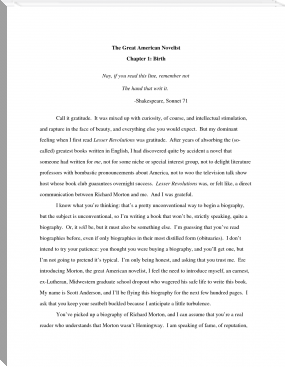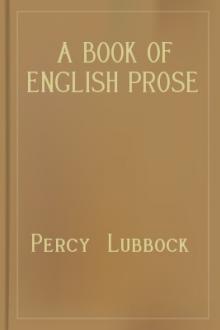Old Mortality, Volume 1., Walter Scott [the speed reading book TXT] 📗

- Author: Walter Scott
Book online «Old Mortality, Volume 1., Walter Scott [the speed reading book TXT] 📗». Author Walter Scott
"Yet, although the moss has been collected on the most modern of these humble tombs during four generations of mankind, the memory of some of those who sleep beneath them is still held in reverent remembrance. It is true, that, upon the largest, and, to an antiquary, the most interesting monument of the group, which bears the effigies of a doughty knight in his hood of mail, with his shield hanging on his breast, the armorial bearings are defaced by time, and a few worn-out letters may be read at the pleasure of the decipherer, Dns. Johan—de Hamel,—or Johan—de Lamel—And it is also true, that of another tomb, richly sculptured with an ornamental cross, mitre, and pastoral staff, tradition can only aver, that a certain nameless bishop lies interred there. But upon other two stones which lie beside, may still be read in rude prose, and ruder rhyme, the history of those who sleep beneath them. They belong, we are assured by the epitaph, to the class of persecuted Presbyterians who afforded a melancholy subject for history in the times of Charles II. and his successor. [Note: James, Seventh King of Scotland of that name, and Second according to the numeration of the Kings of England.—J. C.] In returning from the battle of Pentland Hills, a party of the insurgents had been attacked in this glen by a small detachment of the King's troops, and three or four either killed in the skirmish, or shot after being made prisoners, as rebels taken with arms in their hands. The peasantry continued to attach to the tombs of those victims of prelacy an honour which they do not render to more splendid mausoleums; and, when they point them out to their sons, and narrate the fate of the sufferers, usually conclude, by exhorting them to be ready, should times call for it, to resist to the death in the cause of civil and religious liberty, like their brave forefathers.
"Although I am far from venerating the peculiar tenets asserted by those who call themselves the followers of those men, and whose intolerance and narrow-minded bigotry are at least as conspicuous as their devotional zeal, yet it is without depreciating the memory of those sufferers, many of whom united the independent sentiments of a Hampden with the suffering zeal of a Hooper or Latimer. On the other hand, it would be unjust to forget, that many even of those who had been most active in crushing what they conceived the rebellious and seditious spirit of those unhappy wanderers, displayed themselves, when called upon to suffer for their political and religious opinions, the same daring and devoted zeal, tinctured, in their case, with chivalrous loyalty, as in the former with republican enthusiasm. It has often been remarked of the Scottish character, that the stubbornness with which it is moulded shows most to advantage in adversity, when it seems akin to the native sycamore of their hills, which scorns to be biassed in its mode of growth even by the influence of the prevailing wind, but, shooting its branches with equal boldness in every direction, shows no weather-side to the storm, and may be broken, but can never be bended. It must be understood that I speak of my countrymen as they fall under my own observation. When in foreign countries, I have been informed that they are more docile. But it is time to return from this digression.
"One summer evening, as in a stroll, such as I have described, I approached this deserted mansion of the dead, I was somewhat surprised to hear sounds distinct from those which usually soothe its solitude, the gentle chiding, namely, of the brook, and the sighing of the wind in the boughs of three gigantic ash-trees, which mark the cemetery. The clink of a hammer was, on this occasion, distinctly heard; and I entertained some alarm that a march-dike, long meditated by the two proprietors whose estates were divided by my favourite brook, was about to be drawn up the glen, in order to substitute its rectilinear deformity for the graceful winding of the natural boundary. [Note: I deem it fitting that the reader should be apprised that this limitary boundary between the conterminous heritable property of his honour the Laird of Gandercleugh, and his honour the Laird of Gusedub, was to have been in fashion an agger, or rather murus of uncemented granite, called by the vulgar a drystane dyke, surmounted, or coped, cespite viridi, i.e. with a sodturf. Truly their honours fell into discord concerning two roods of marshy ground, near the cove called the Bedral's Beild; and the controversy, having some years bygone been removed from before the judges of the land, (with whom it abode long,) even unto the Great City of London and the Assembly of the Nobles therein, is, as I may say, adhuc in pendente.—J. C.] As I approached, I was agreeably undeceived. An old man was seated upon the monument of the slaughtered presbyterians, and busily employed in deepening, with his chisel, the letters of the inscription, which, announcing, in scriptural language, the promised blessings of futurity to be the lot of the slain, anathematized the murderers with corresponding violence. A blue bonnet of unusual dimensions covered the grey hairs of the pious workman. His dress was a large old-fashioned coat of the coarse cloth called hoddingrey, usually worn by the elder peasants, with waistcoat and breeches of the same; and the whole suit, though still in decent repair, had obviously seen a train of long service. Strong clouted shoes, studded with hobnails, and gramoches or leggins, made of thick black cloth, completed his equipment. Beside him, fed among the graves a pony, the companion of his journey, whose extreme whiteness, as well as its projecting bones and hollow eyes, indicated its antiquity. It was harnessed in the most simple manner, with a pair of branks, a hair tether, or halter, and a sunk, or cushion of straw, instead of bridle and saddle. A canvass pouch hung around the neck of the animal, for the purpose, probably, of containing the rider's tools, and any thing else he might have occasion to carry with him. Although I had never seen the old man before, yet from the singularity of his employment, and the style of his equipage, I had no difficulty in recognising a religious itinerant whom I had often heard talked of, and who was known in various parts of Scotland by the title of Old Mortality.

"Where this man was born, or what was his real name, I have never been able to learn; nor are the motives which made him desert his home, and adopt the erratic mode of life which he pursued, known to me except very generally. According to the belief of most people, he was a native of either the county of Dumfries or Galloway, and lineally descended from some of those champions of the Covenant, whose deeds and sufferings were his favourite theme. He is said to have held, at one period of his life, a small moorland farm; but, whether from pecuniary losses, or domestic misfortune, he had long renounced that and every other gainful calling. In the language of Scripture, he left his house, his home, and his kindred, and wandered about until the day of his death, a period of nearly thirty years.
"During this long pilgrimage, the pious enthusiast regulated his circuit so as annually to visit the graves of the unfortunate Covenanters, who suffered by the sword, or by the executioner, during the reigns of the two last monarchs of the Stewart line. These are most numerous in the western districts of Ayr, Galloway, and Dumfries; but they are also to be found in other parts of Scotland, wherever the fugitives had fought, or fallen, or suffered by military or civil execution. Their tombs are often apart from all human habitation, in the remote moors and wilds to which the wanderers had fled for concealment. But wherever they existed, Old Mortality was sure to visit them when his annual round brought them within his reach. In the most lonely recesses of the mountains, the moor-fowl shooter has been often surprised to find him busied in cleaning the moss from the grey stones, renewing with his chisel the half-defaced inscriptions, and repairing the emblems of death with which these simple monuments are usually adorned. Motives of the most sincere, though fanciful devotion, induced the old man to dedicate so many years of existence to perform this tribute to the memory of the deceased warriors of the church. He considered himself as fulfilling a sacred duty, while renewing to the eyes of posterity the decaying emblems of the zeal and sufferings of their forefathers, and thereby trimming, as it were,





Comments (0)